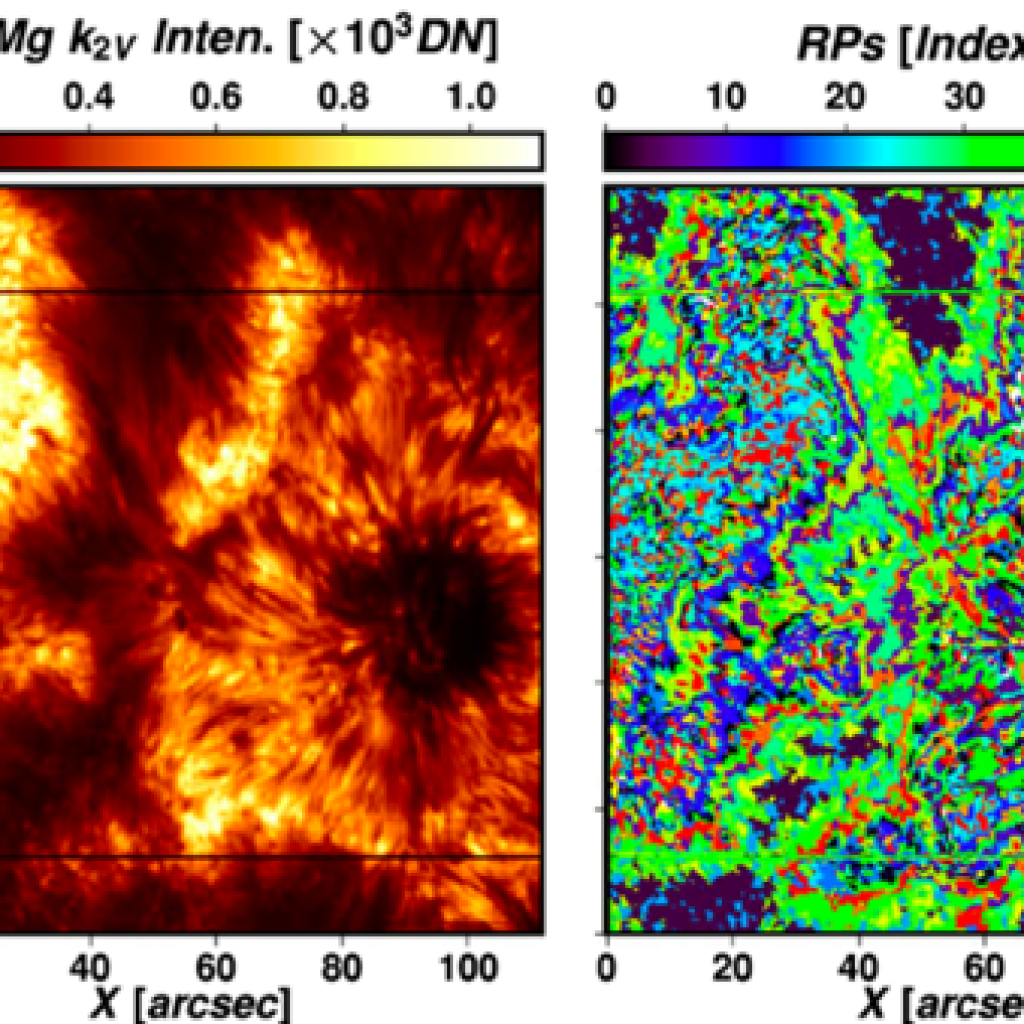The present ISSI team will meet the challenges posed by the multiple physical mechanisms operating on surges by combining new 3D radiative-MHD numerical experiments, available high-resolution chromospheric observations and machine learning techniques, thus providing a yet remaining joint perspective about surges and moving towards the understanding of these key phenomena for the solar atmosphere. The concrete goals and feasibility of the proposal are explained in the following.
Our first aim is to develop and exploit the first 3D radiative-MHD model of surges. To that end, we use the Bifrost code (Gudiksen et al. 2011): the most advanced numerical code available at present to compute processes in the solar atmosphere. This way, we will be able to include a number of relevant physical mechanisms missing in previous surge simulations, like nonequilibrium ionization of hydrogen and partial ionization effects, which are essential to properly treat the chromospheric plasma. Our team includes scientists with broad experience using this code (as well as other MHD codes). In fact, the main code developers of the Bifrost modules of nonequilibrium ionization and the Generalized Ohm’s Law are members of the team. The team also includes expertise in magnetic flux emergence, reconnection, radiation transfer, and cooling/heating processes that is essential to achieve this first goal. Concerning the calculations, we have access to highly-parallel supercomputers in Spain and Norway to perform the new proposed numerical experiments. Thanks to this modeling approach, a new perspective on the morphology, dynamics and time evolution of surges will be obtained with a degree of detail that will allow direct comparison with observations.
Our second goal is to provide a complete characterization of the surge spectral profiles in the main chromospheric lines in which they are observed, namely, H 6563 , Ca II 8542 , Ca II H & K and Mg II h&k. For the data, we will take advantage of the available high-resolution observations from the Swedish 1-m Solar Telescope (SST) and the Interface Region Imaging Spectrograph (IRIS). Our team includes experts in SST observations that are also involved in the corresponding observational campaigns, so new observational high-quality data related to surges acquired during the project could also be added to the already existing data we plan to use. Furthermore, our team is also joined by researchers with expertise on near-UV and far-UV IRIS observations and extreme-UV observations from the Solar Dynamics Observatory (SDO), who will provide knowledge that is required for achieving the full observational description of the surge phenomena. For the characterization of the surge profiles, we intend to use the Python tools available on the Scikit-learn library. This way, we can, for instance, reduce the dimensionality of surge spectral profiles in the aforementioned wavelengths through Principal Component Analysis and obtain the representative profiles through clustering algorithms like k-means. Our team includes experts in these methods, which have already been employed, for example, to characterize Mg II h&k profiles from IRIS observations (see Figure 3). Furthermore, we have our own computational servers to train and test the machine learning methods planned for this project.
Combining both goals, we will be able to lay the basis for a direct comparison of surge data from numerical experiments and observations: a fundamental step that will be only possible through a strong synergy between the different experts selected for this research proposal. In addition, we will be in a privileged situation in which we could provide a robust theoretical insight about surges through the first radiative-MHD 3D model of these phenomena, as well as a better understanding of fundamental mechanisms like partial ionization. This could be key not only to interpreting the already available ground and space observations from SST and IRIS, but also for future results obtained, e.g., from the Solar Orbiter: the diagnostics of the images taken by the HRILya telescope on the EUI instrument will need theoretical support from simulations including nonequilibrium ionization of hydrogen to explain the features observed in Lyman- . The characteristic chromospheric spectral profiles that we intent to get could also open a new avenue to build automatic detection algorithms of the surge phenomena in observations, as well as alleviating the computational cost of inversions while obtaining physical parameters to compare with the simulations. We also expect to submit several papers in peer-reviewed journals and present our results in international conferences such as the IRIS meetings, the Flux Emergence Workshops (FEW), and the Partially Ionised Plasmas in Astrophysics (PIPA) meetings.

Figure 3. Image from the paper by Sainz Dalda et al. 2019. Left panel: slit-reconstructed intensity map of NOAA AR 12480 observed by IRIS at Mg II k2V. Right panel: location of the representative profiles (RPs) obtained through k-means clustering.
